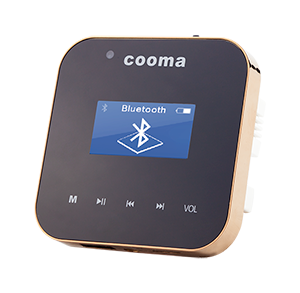An intelligent music system possesses the remarkable ability to adapt seamlessly to various environments, enriching the auditory experience regardless of the setting. This adaptability is made possible through a sophisticated integration of cutting-edge technologies and intuitive functionalities, designed to analyze, understand, and optimize audio playback to suit the unique characteristics of each environment.
At the core of an intelligent music system's adaptability lies its capability for room calibration. By employing advanced algorithms and sensors, such as built-in microphones or external devices, the system assesses the acoustic properties of the space in which it operates. This analysis encompasses factors such as room dimensions, acoustics, and ambient noise levels. With this comprehensive understanding of the environment, the system can make precise adjustments to audio settings, including equalization, volume levels, and speaker positioning. By tailoring these parameters to suit the specific acoustical profile of the room, the system ensures optimal sound quality and fidelity, delivering an immersive listening experience that resonates with the unique characteristics of the space.
Moreover, an intelligent music system leverages adaptive equalization (EQ) to fine-tune audio output in real-time, responding dynamically to changes in the environment. These adaptive EQ algorithms continuously monitor ambient noise levels, room reverberation, and speaker placement, among other factors. By analyzing this data, the system can intelligently adjust frequency response to compensate for any acoustic anomalies, ensuring consistent audio quality across different environments. Whether in a spacious living room, a cozy bedroom, or a bustling office space, the system adapts its EQ settings to optimize sound reproduction, allowing listeners to immerse themselves fully in their favorite music or audio content.
Environmental sensors further enhance the adaptability of intelligent music systems by providing valuable insights into the surrounding conditions. Sensors measuring parameters such as temperature, humidity, and ambient light levels offer valuable data that the system can utilize to tailor the listening experience. For instance, in a dimly lit room, the system may adjust display brightness and color schemes to minimize distractions and enhance visual comfort. Similarly, in environments with fluctuating temperature or humidity levels, the system may fine-tune audio parameters to ensure optimal performance and longevity of components.
In addition to sensor data, an intelligent music system takes into account user preferences and profiles to personalize the listening experience further. Users can create customized profiles with specific preferences for audio settings, such as preferred volume levels, EQ presets, and playback modes. These profiles can be associated with different environments or activities, allowing the system to automatically adjust audio settings based on the user's context. Whether relaxing at home, working in the office, or exercising outdoors, users can enjoy a tailored audio experience that aligns with their preferences and activities.
Furthermore, adaptive streaming technology ensures uninterrupted playback of audio content, even in environments with varying network conditions. By dynamically adjusting bitrate and compression settings based on available bandwidth and network stability, the system maintains a seamless listening experience, free from buffering or interruptions. This adaptive streaming capability ensures consistent audio quality across different environments, whether streaming music from online services or playing locally stored content.


